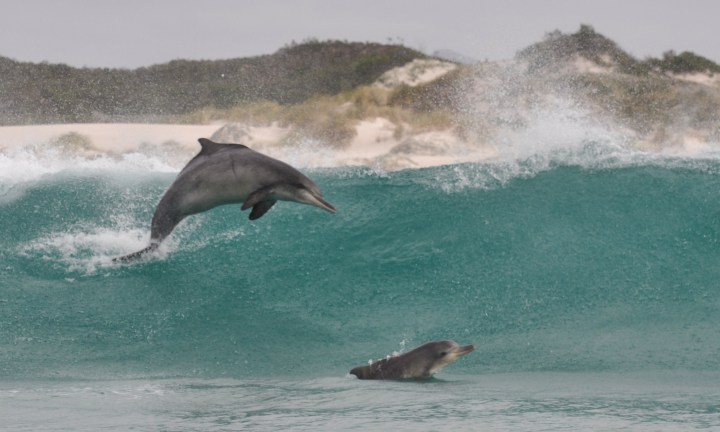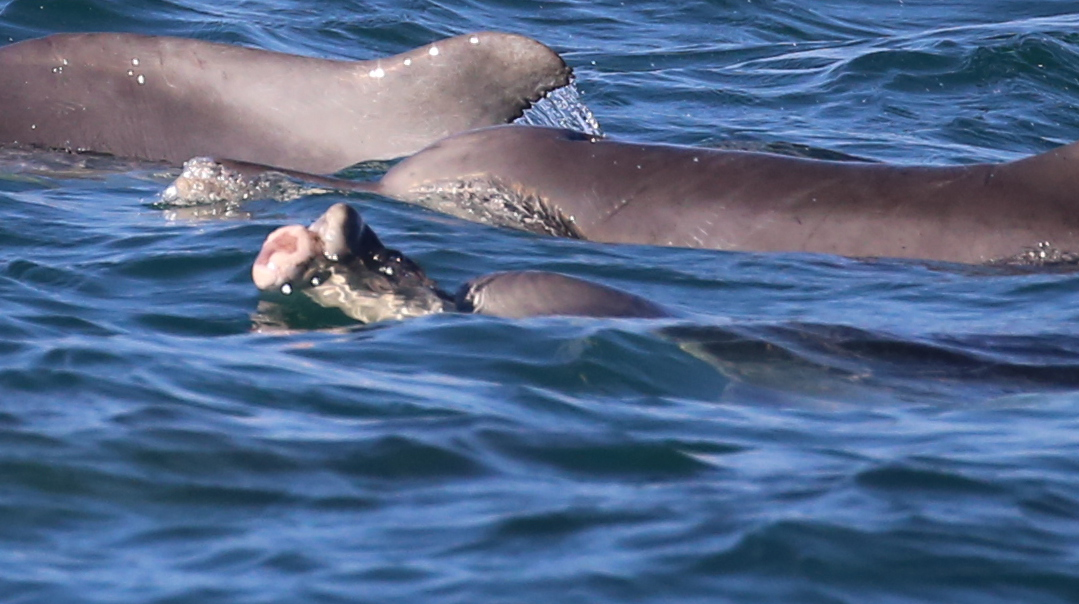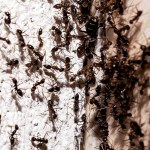EMBATTLED SPECIES OP-ED
Endangered humpback dolphins appear to be increasingly vulnerable off South Africa

Humpback dolphins are now as rare as the black rhino and the African pangolin. Of concern is that we have observed several animals with abnormal beaks (rostrums) varying from slight injuries to completely broken structures.
Showing their humped backs and playful nature, humpback dolphins are one of the five species of dolphins you can easily see from the shore along the South African coastline.
However, your chances of sighting one of these elusive animals is becoming increasingly rare. Humpback dolphins are now the most endangered cetacean species in South Africa.
As population numbers have always been small and with observed group sizes getting smaller each year, it seems likely that the population as a whole is shrinking. This species is now as rare as the black rhino and the African pangolin.
Last year during one of our dedicated humpback dolphin surveys, we noticed something unusual that began to concern us even more. Several animals were seen with abnormal beaks (rostrums) varying from slight injuries to completely broken structures.
The story really started intriguing us when we discovered several other historical cases in datasets from other collaborators around South Africa. The questions we tried to answer in our new study published in Integrative Zoology were: How common are these beak injuries in South African humpback dolphins? and does this highlight another threat to this vulnerable population?
We were able to identify 31 different cases of unusual beak conditions varying from slight misalignments to severe wounds. Most of the cases were characterised as natural injuries, although one individual had a fishing line attached to the front of its head, clearly showing an injury caused by human activities.
Read in Daily Maverick: “Book of the Dead – the species declared extinct in 2022”
By delving back into our combined archives and looking at photographs from the past 20 years, we gained some real insight into the resilience of these hardy dolphins as some individuals had been living with abnormal rostrums for as long as 10 years.
In fact, some individuals have even successfully raised calves. This shows the incredible adaptability of these animals under extreme conditions.
Why are humpback dolphins breaking their beaks?
The incidence of body abnormalities in isolated, small populations of mammals is known to be linked to many potential causes such as genetic dysfunctions (often related to inbreeding) and/or other environmental stressors such as pollution and injuries from human activities.
If the primary cause was genetic-related, we would expect more cases in dependent calves. However, all the individuals we identified here were adults, so we have put this hypothesis aside (for now). We can’t yet confidently pinpoint one single cause for these injuries, and suspect that a number of factors may be involved, including:
Skull morphology
Species like the humpback dolphin with longer beaks might be more susceptible to injuries compared with those with shorter, more robust beaks. Also, since humpback dolphins need to develop this structure in the first years of their life, injuries due to their learning process for feeding behaviours (see below) could transform healed beaks in abnormal shapes as the ones reported in the study.

Beak damage in a humpbac dolphin. (Photo: Supplied)

A humpback dolphin with a damaged beak. (Photo: Supplied)
Hunting strategies
Humpback dolphins are known to hunt in reefs, including investigating crevices with their long rostrums. We think that these feeding strategies could also result in beak injuries due to collision with sharp reefs or potentially getting their rostrums stuck in gaps in the reefs.
Predator defence
South Africa is recognised as the shark capital of the world, with a number of species overlapping the range of humpback dolphins. Many individuals bear deep scars from shark bites, and those are the survivors!
Humpback and other dolphin species along our coast have been seen to fight back against sharks, or chase them away. It is certainly plausible that interactions like these could result in skin and/or beak injuries.
Interactions with other humpback dolphins
As with all dolphin species, humpback dolphins also fight each other regularly, and there are even reported cases of infanticide in other humpback dolphin species, where adult males tried to kill calves, and mothers tried to defend them. These situations could result in beak injury for the individuals, although we’re then likely to see similar injuries in other populations as well.
Interactions with other dolphin species
Humpback dolphins live on the Cape South Coast, a habitat they share almost completely with tens of thousands of the slightly smaller Indo-Pacific bottlenose dolphins (the species are considered “sympatric”).
The two species regularly interact, and although many interactions appear peaceful at the surface, some can be remarkably violent. It has been proposed that humpback dolphins in South Africa tend to avoid bottlenose dolphins to save energy. These negative interactions could also result in beak injuries.
Contaminants
Humpback dolphins from the KwaZulu-Natal population have been recorded with the highest levels of organochlorines of any marine mammal off South Africa and DDT concentrations that are among the highest reported in dolphins globally.
Elevated exposure to contaminants like this can result in decreased bone mass density – injuries on the rostrum could be exacerbated due to low bone density of the South African humpback dolphins.
Endangered species
The number of animals assessed in this study represents about a quarter of the population for South Africa, which in 2018 was estimated at about 500 humpback dolphins left in the country.
However, the number of dolphins with abnormal conditions is likely to be underestimated since not all individuals had their beaks photographed.
Read in Daily Maverick: “We’ve discovered why some whales stop feeding in response to the sound of sonar”
The discovery of this phenomenon seems to be unique for the South African population as there are very few similar cases from other populations of this species, and it may indicate that these dolphins are at a greater threat than previously thought.
Open wounds associated with the initial stages of the beak injuries reported here may further increase their vulnerability to contracting infectious diseases, thus potentially becoming an additional threat to this dolphin population.
Humpback dolphins are the only resident marine mammal in South Africa listed as endangered according to the International Union for Conservation of Nature’s Red List of Threatened Species, with numbers potentially decreasing.
Their main threats include degradation of inshore habitats, water pollution, boat traffic, shark nets, coastal development, overfishing and climate change.
Our work, which was funded by the National Research Foundation, is part of a longer-term study combining photo identification and passive acoustic monitoring to detect and investigate this elusive species along the South African coastline.
The high incidence of abnormal beak conditions in humpback dolphins highlights the importance of assessing the impacts of this phenomenon on population health, as well as the necessity of mitigating the current threats to this endangered species. DM/OBP
Guilherme Frainer is a postdoctoral fellow at the University of Cape Town. Simon Elwen is an associate researcher at Stellenbosch University. Sasha Dines is a PhD candidate at Stellenbosch University. Tess Gridley is an honorary senior lecturer at Stellenbosch University.





















 Become an Insider
Become an Insider
Comments - Please login in order to comment.